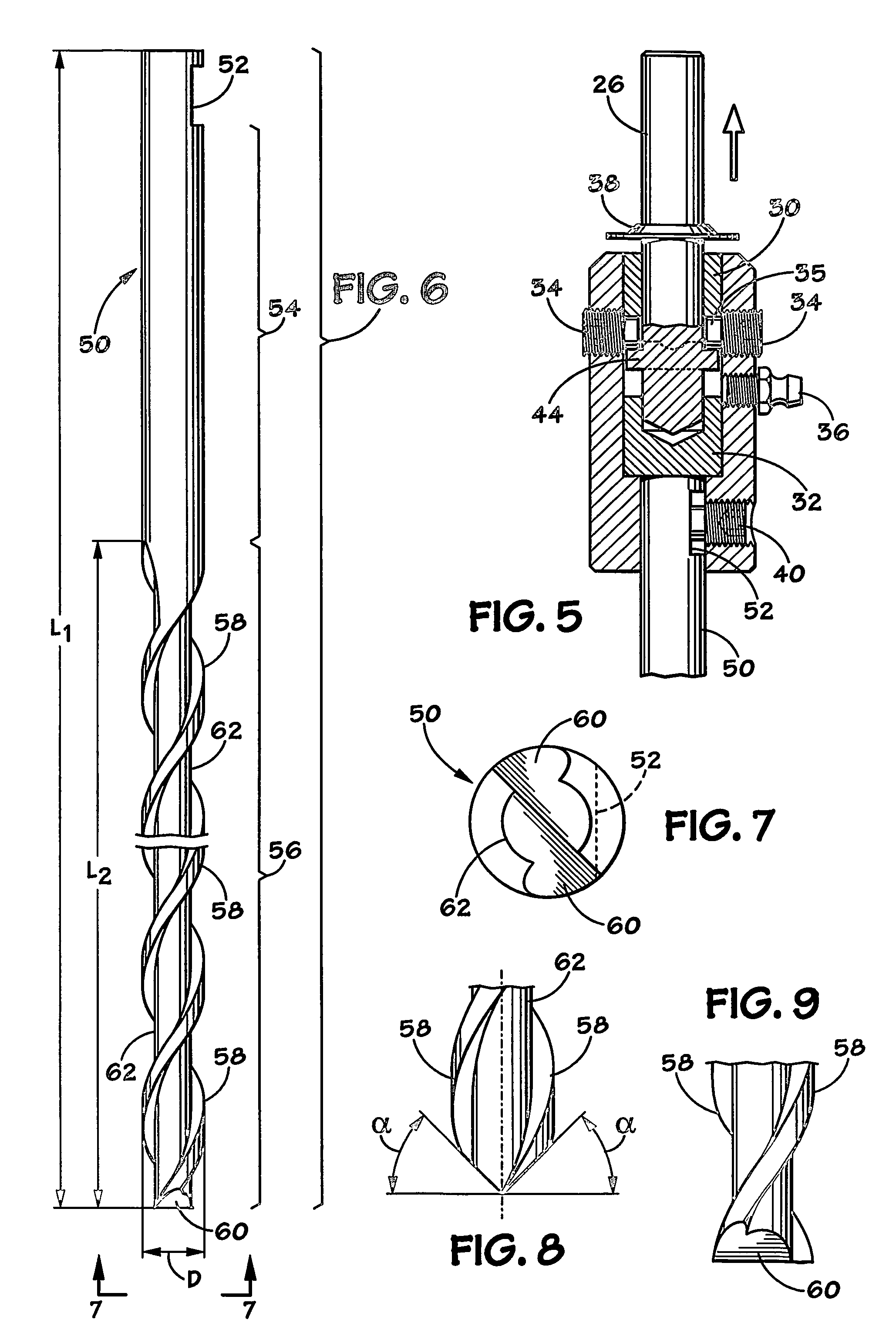Apparatus for turf aerification
a technology of aeration holes and apparatus, applied in the field of soil aerification, can solve the problems of increasing soil compaction around newly created aerification, tearing damage to the remaining grass, and low efficiency of reducing compaction, and achieves the effect of reducing the compaction of the surrounding earth and increasing the density of aerification holes
- Summary
- Abstract
- Description
- Claims
- Application Information
AI Technical Summary
Benefits of technology
Problems solved by technology
Method used
Image
Examples
Embodiment Construction
[0051]In the following description, “drill” should be understood to mean an apparatus comprising both a drill chuck and a drill bit held within the chuck.
[0052]Referring now to FIG. 1, a portion of a reciprocating turf aerator is shown as a partial cut-away drawing. The aerator is shown in simplified form to illustrate how the turf drill of the present invention may be used in practice. Aerator 12 may be moved across an expanse of ground such as soil 22 on wheel(s) 14. Reciprocating heads 20 are connected to crankshaft 16 by connecting rods 18 which cause heads 20 to move generally up and down as crankshaft 16 rotates. Drills 10, attached to heads 20, are thereby alternately thrust into and withdrawn from soil 22. In some commercially-available aerators, crankshaft 16 is driven by the power take off (PTO) of a tractor used to pull aerator 12 across a putting green, for example.
[0053]As mentioned above, this is a simplified view of a reciprocating aerator. Commercial aerators are typ...
PUM
 Login to View More
Login to View More Abstract
Description
Claims
Application Information
 Login to View More
Login to View More - R&D
- Intellectual Property
- Life Sciences
- Materials
- Tech Scout
- Unparalleled Data Quality
- Higher Quality Content
- 60% Fewer Hallucinations
Browse by: Latest US Patents, China's latest patents, Technical Efficacy Thesaurus, Application Domain, Technology Topic, Popular Technical Reports.
© 2025 PatSnap. All rights reserved.Legal|Privacy policy|Modern Slavery Act Transparency Statement|Sitemap|About US| Contact US: help@patsnap.com



